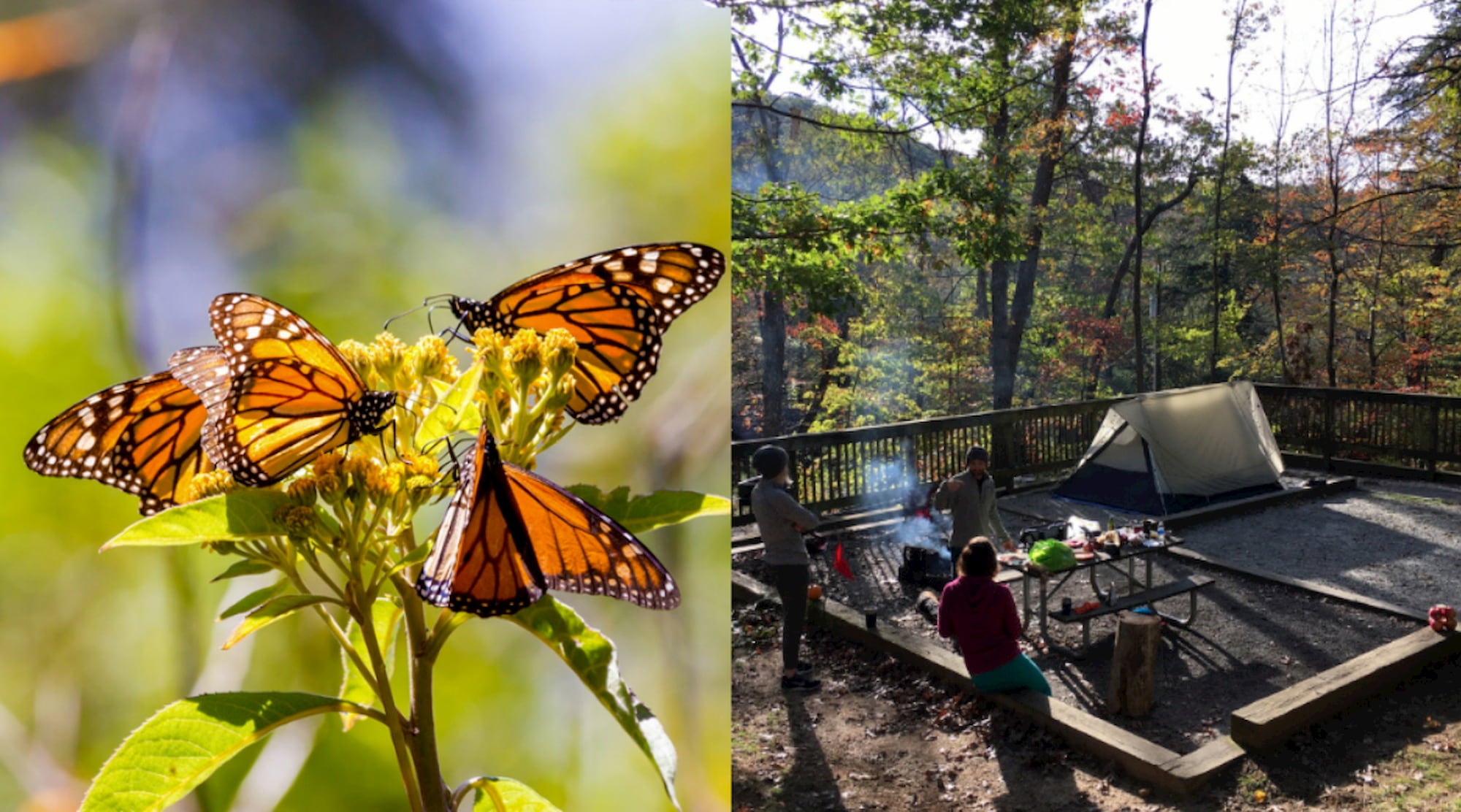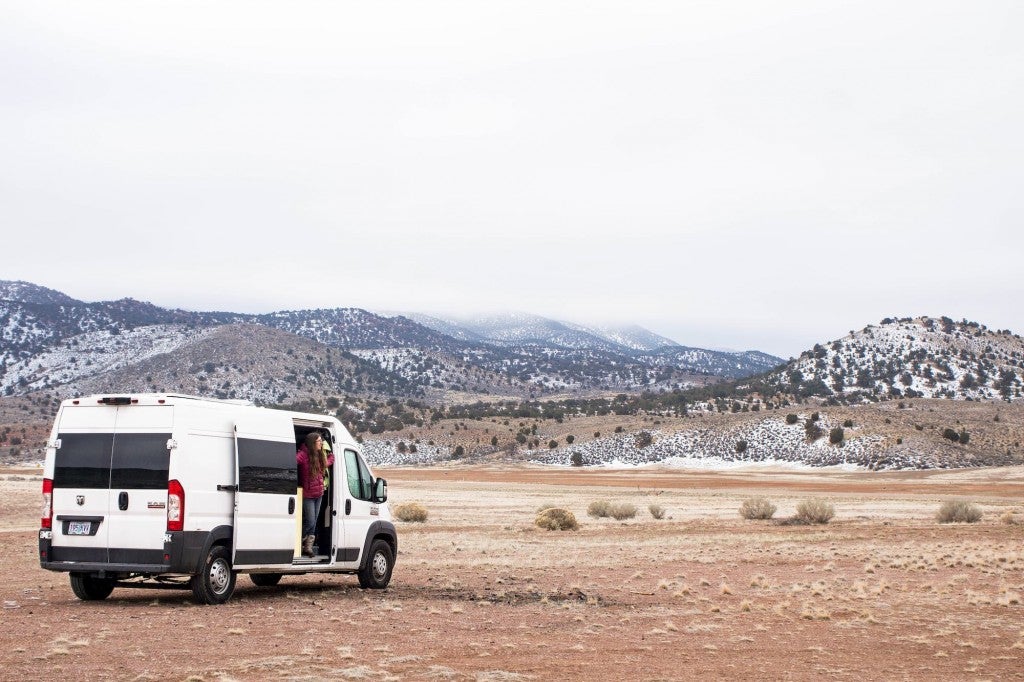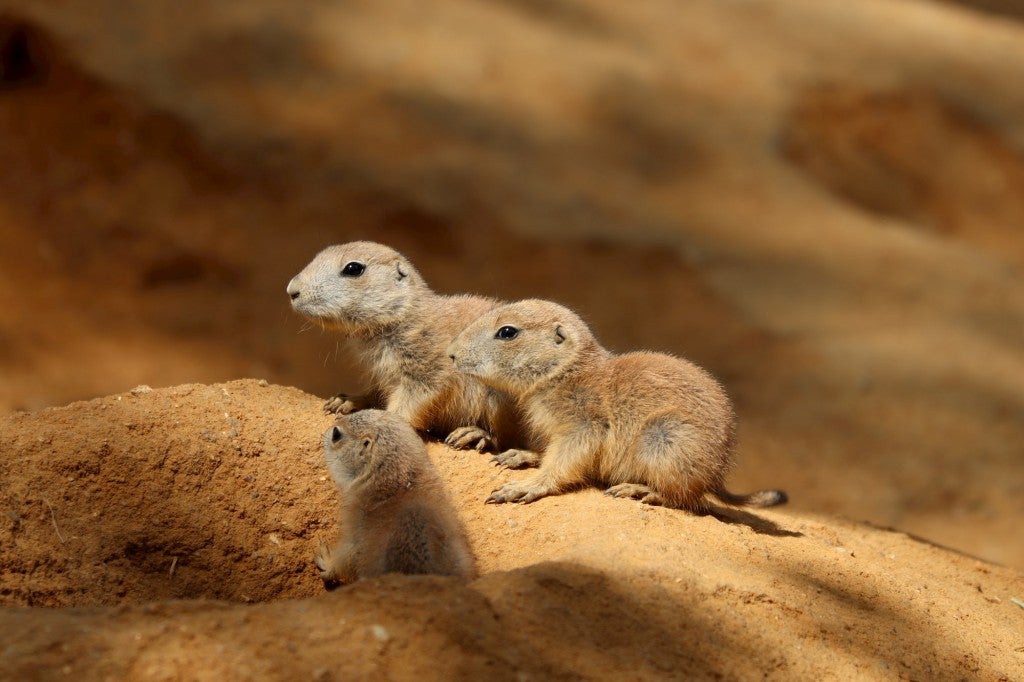A Monarch butterfly emerges from a chrysalis hanging from a milkweed, and unfolds its iconic orange wings for the very first time. This is the beginning of a very long journey.
The breeding season, which coincides with the Monarch butterfly migration north, begins in early spring. These majestic winged insects weigh less than a gram, yet they’ll undergo one of the longest circulatory migration patterns known in nature, a trip that can total more than 3,000 miles.
Monarch butterflies in Georgia are a common sight as the butterflies travel south for a warm spring and summer, but you have to know when to look for them, and how to help them on their journey. There are several certified Monarch butterfly habitats in and around campsites where Monarch butterflies are sure to float through during their migration and breeding season.
Witness the Incredible Journey of the Monarch Butterfly Migration Through Georgia
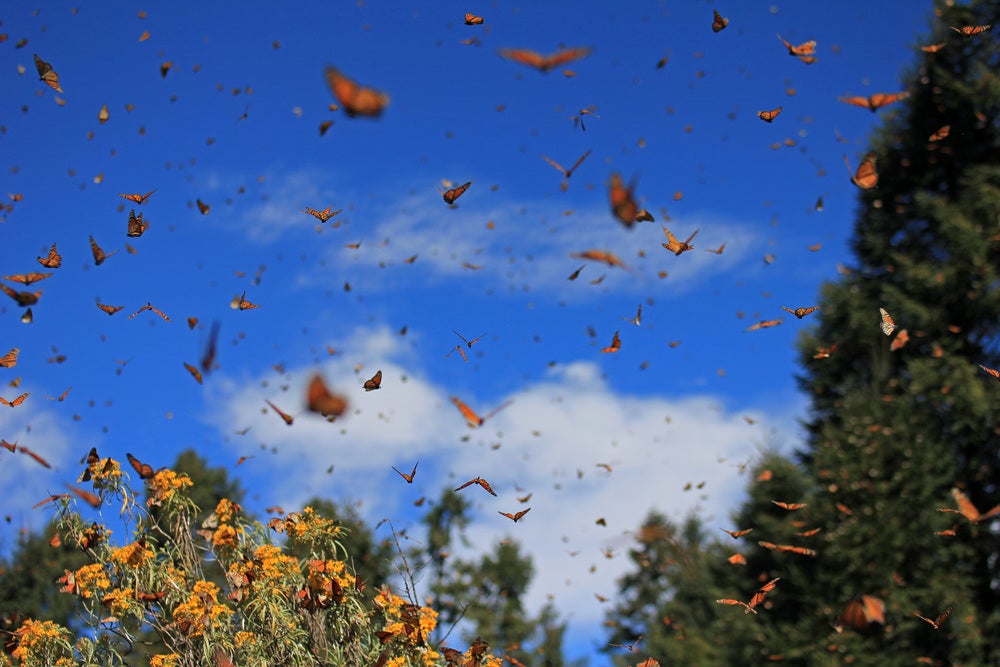
The north-bound portion of the Monarch butterfly migration begins in Mexico in the early Spring. The entire trip can take up to two months as they travel throughout the eastern United States; the farthest documented Monarch flight in a single day is 285 miles. Round trip, some Monarch migrations reach 3,000 miles. If you’re anywhere along their migration path, you can track sightings month by month from the previous year at the Journey North interactive Monarch map.
Sightings of Monarch butterflies in Georgia typically increase at the start of April as the butterflies make their return for the warmer weather. However, even if you don’t see any Monarch sightings in your area, there are steps you can take to make your immediate outdoors a welcome home to Monarchs.
As they fly north, the Monarchs breed and lay eggs along the migration path. These next generation Monarchs continue the migratory path, and are sometimes in the third generation by the time they reach the northernmost parts of the country.
The Monarch Butterfly Migration Pattern

The eastern U.S. Monarchs aren’t the only kingly butterflies. The west coast has their own Monarchs, with their own flight pattern. Any Monarch butterfly west of the Rocky Mountains will push westward to spend winter in sunny California, roosting in trees along the Pacific Coast in cities like Santa Cruz and San Diego.
The eastern U.S. Monarchs that float through Georgia come from all over, from Canada, Florida, the East Coast, and the Midwest, and all eventually meet in Central Texas to make the final leg of the trip into Mexico. They’ll spend the winter in the warm Sierra Madre Mountains, congregating by the thousands in oyamel fir forests.
People have long been captivated by the spectacle of a flurry of orange butterfly wings flapping along their lengthy and treacherous path every year. Fascinating as it is, little is understood about how Monarchs complete their migration. How the Monarch butterflies instinctively know where to travel, even those born along the route, is still a mystery to researchers. For now, they postulate that a combination of the Earth’s magnetic pull and the sun’s position act as directional aids for the Monarchs.
How to Help The Monarch Butterflies in Georgia

Tough as the tiny Monarch is, recent years have shown that they’re struggling during the Monarch butterfly migration. The Xerces Society for Invertebrate Conservation has found that the Western U.S. population of Monarchs has fallen by 99.4 percent since the 1980s. While 2018 proved to be a prolific year for the Eastern Monarchs, that spike in population only follows after decades of decline.
Both the Monarch population and their migratory phenomenon are in trouble. According to the State Botanical Garden of Georgia, there’s not one guilty culprit. The deterioration of the Monarch butterfly population is likely due to a combination of diminished milkweed plants, climate change, and pesticides. But there are steps we can take to help the Monarch butterflies.
Monarch butterflies in Georgia can be supported by planting milkweed, but only very specific types of the plant. Milkweed is the only plant on which the Monarch can lay eggs. The plant is poisonous, containing Cardiac Glycosides, which the Monarch caterpillars feast on. Later, the Monarch stores this poison in its butterfly body to ward off and harm predators. Without the milkweed, Monarch butterflies have nowhere to lay their eggs and breeding comes to a halt. Planting the right types of milkweed can support the continued growth of Monarch butterflies in Georgia.
Four types of milkweed that readily grow in Georgia are:
- Whorled Milkweed
- Clasping Milkweed
- Butterfly Weed
- Red-ring Milkweed
However, there are some milkweed variations to avoid in Georgia. Planting non-native species can be detrimental to the existing milkweed plants and even confuse Monarch butterflies while on their migration. Avoid planting these milkweeds in Georgia:
- Tropical or Scarlet Milkweed
- Common Milkweed
Cultivate a Certified Pollinator Habitat for Monarchs
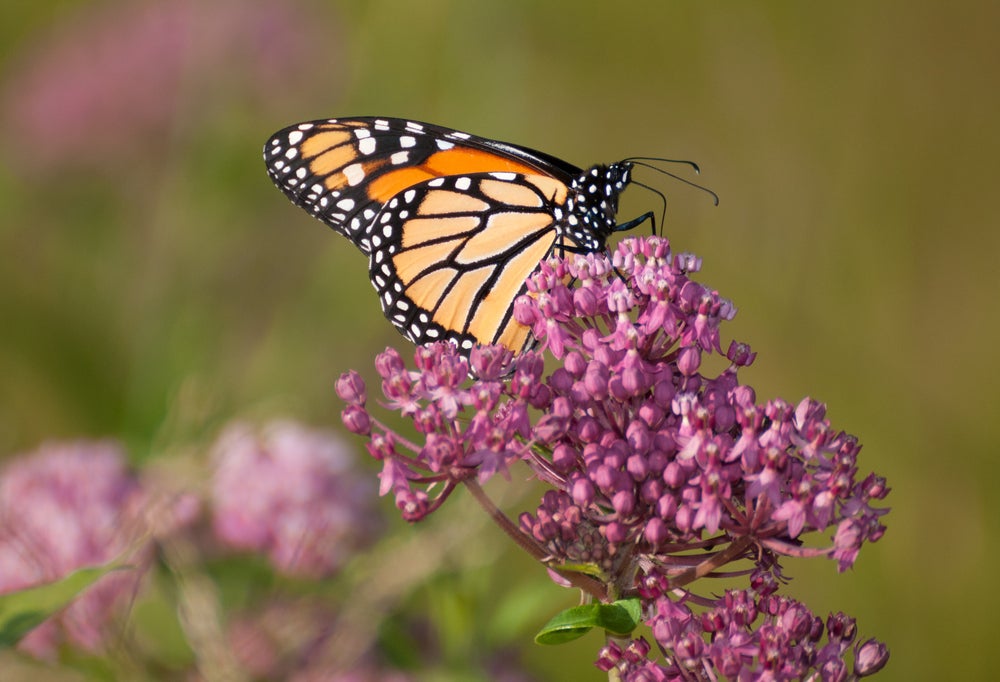
If you’re looking to lend more support to the Monarch butterflies in Georgia beyond planting milkweed and hoping for the best, consider creating a certified pollinator habitat. In addition to milkweeds, certified habitats contain host plants for five other butterfly species, as well as nectar sources for pollinators in the summer, spring, and fall.
These special habitats supply butterflies with a water source, as well as shelter from predators and weather. If your garden or backyard has met all these requirements, and follows at least nine conservation practices, Monarchs Across Georgia will certify your habitat, and the Monarchs passing through your area will linger awhile to thank you.
Camping Near the Monarch Butterfly Migration
Not everyone has the backyard space or the green thumb necessary to help the Monarch butterfly migration. For apartment dwellers and the plant inept, there are community pollinator habitats that are open to the public. By camping near these sites at the right time, visitors can witness and support the Monarch butterflies in Georgia.
The following are certified pollinator habitats by the Monarchs Across Georgia organization. A full list of pollinator habitats can be found here.
Callaway Gardens
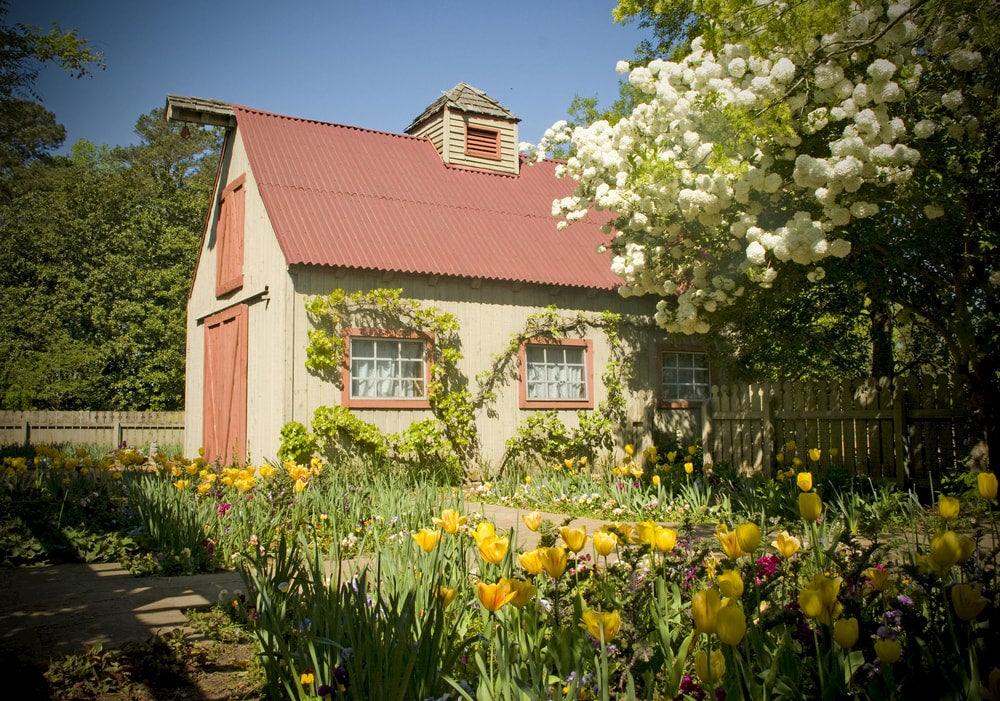
The Vaughn-Jordan Wildlife Habitat and the Butterfly Center at Callaway Gardens in Pine Mountain, Georgia, support thousands of butterflies. Callaway Gardens offers recurring classes on how to garden to attract Monarch butterflies to your home. During migration season in the fall, the gardens also host a Monarch tagging event. The tags support research efforts on the migratory process. The gardens grow plenty of milkweed, so if you stop by for a visit in the Spring, it’s likely you’ll meet with a Monarch ready to lay eggs.
Camp Nearby: Pine Mountain RV Resort
The Pine Mountain RV Resort is located just a few minutes down Main Street. Staying here means you may spot some migrating Monarchs on their way to Callaway Gardens.
The resort offers a range of overnight stay options, including yurts, small cabins, resort cabins, large cabins, and RV sites. The campsite is pet-friendly and makes fire pits available for those looking for more traditional camping activities. There’s also a swimming pool, concierge, and premium wine for those looking for more of a “glamping” experience.
Chattahoochee Nature Center
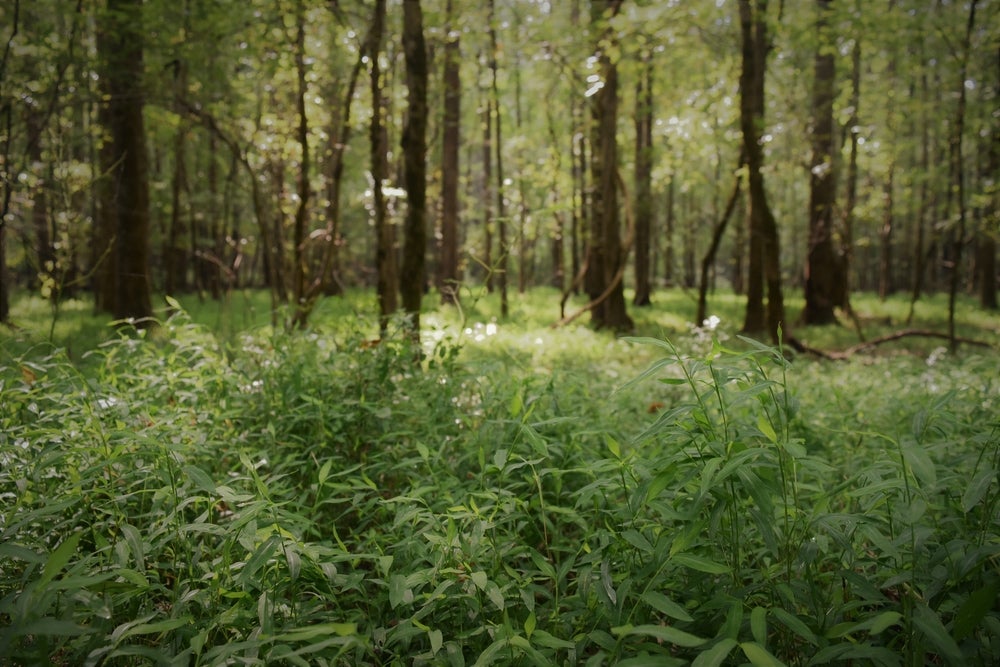
The Chattahoochee Nature Center in the metro-Atlanta suburb of Roswell, GA dedicates an entire weekend to the Monarch butterfly and their fellow pollinators. The Butterfly Festival is a weekend in late spring that celebrates all things butterfly — releases, encounters, host plants, and art. The event also offers face painting, live entertainment, and food trucks. Festival goers can learn about growing milkweed at home, the migration patterns of Monarchs, and most likely see some of the orange Monarchs live and in action.
Camp nearby: Hembree Park
People staying in the Roswell area to see the Monarch butterflies don’t have to book a hotel. There aren’t a lot of camping options in this Northern section of metro-Atlanta, but there are little-known backcountry camping plots nearby in Hembree Park.
The backcountry sites are located near the back of the park, adjacent to a stream and the hiking/walking trail. The tent suitable camping sites come with a fire ring and picnic pavilion. Hembree is a public park, so expect the nearby hiking/walking trails to get a fair amount of traffic. Dogs are permitted.
Make sure to call and reserve your site first at 770–569–9746.
Amicalola Falls State Park
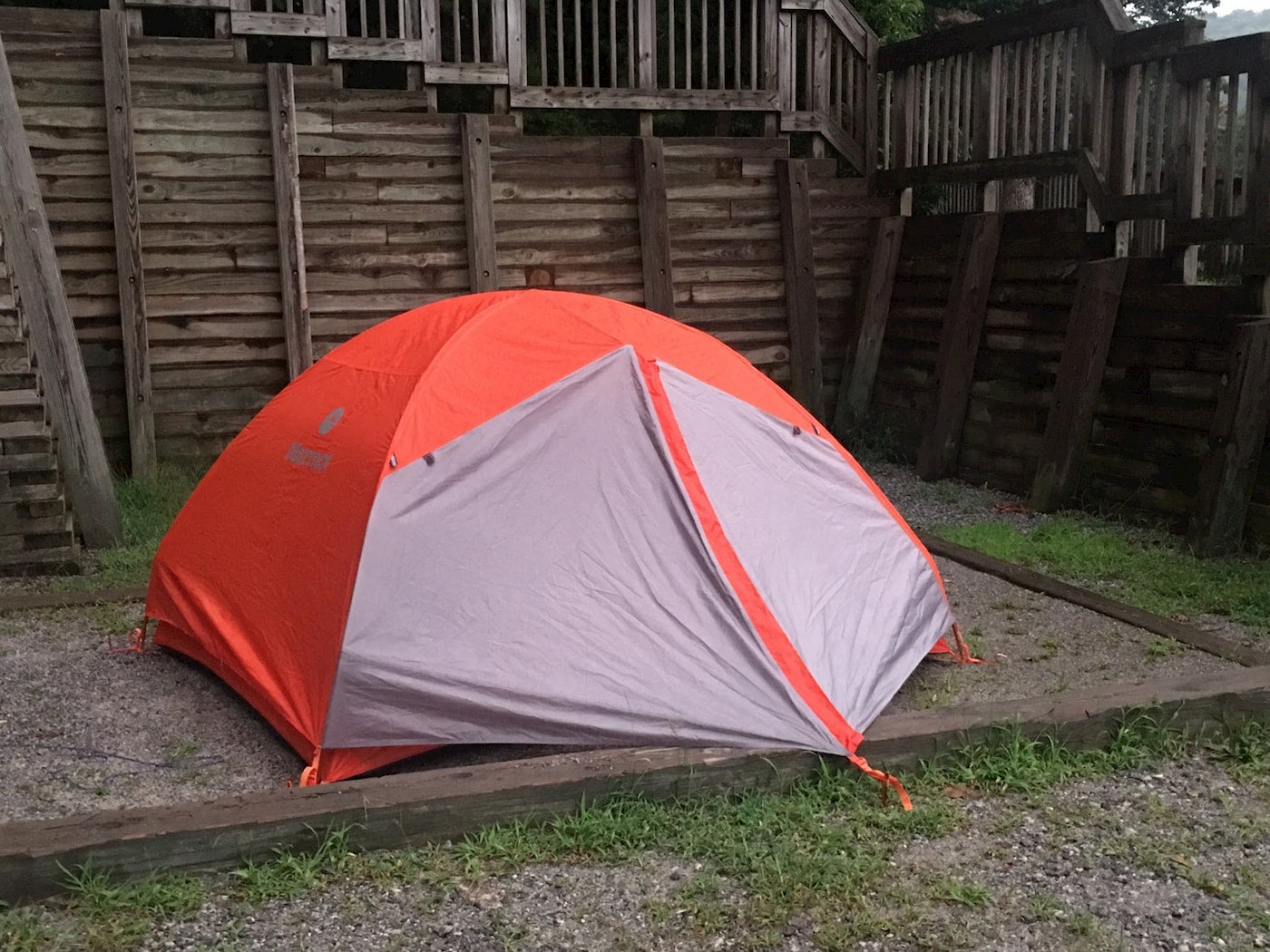
Image from The Dyrt camper Katie H.
Perhaps the most spectacular way to publicly view the Monarch’s journey in Georgia is at the Monarch Mountain Stop Pollinator Garden in Amicalola Falls State Park. From there, you’ll have a five-mile hike to the Len Foote Hike Inn, which is only accessible by trail.
The garden at the Hike Inn is used as an experiential school house, and staff educates visitors on the local fauna and flora, including Monarch butterflies and how to create a welcoming environment for them.
If you’re tired from the five-mile trek to get there, you have the option to rest at the Hike Inn. Otherwise, it’s back on the trail headed toward Amicalola Falls State Park. The state park accommodates tent campers, RVers, and cabin sleepers. While making your reservation at the official site, make sure you check the specifications of the plot if you have a larger RV vehicle. Once you’re done butterfly watching, it’s highly recommended to take the series of trails up to the state park’s namesake, the Amicalola Falls.
Related Campgrounds:
- Old Federal Campground, Flowery Branch, GA
Popular Articles:
Articles on The Dyrt Magazine may contain links to affiliate websites. The Dyrt receives an affiliate commission for any purchases made by using such links at no additional cost to you the consumer.

